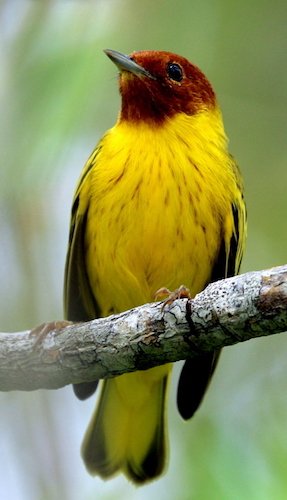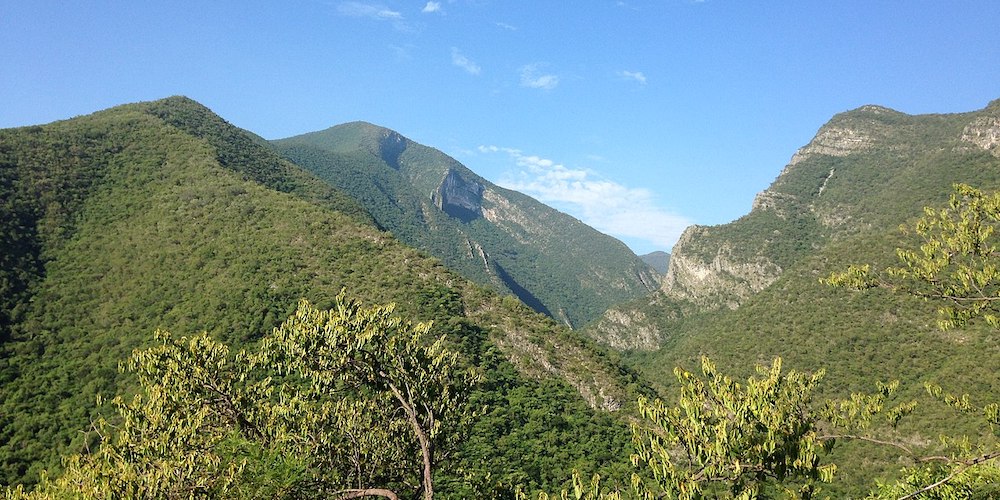Free and Sovereign State of Tamaulipas

Tamaulipas is a state in Mexico; one of the 31 states which, along with Mexico City, comprise the 32 Federal Entities of Mexico. The state covers over 80,000 km2 (nearly 31,000 square miles) and houses approaching four million people. It is divided into 43 municipalities. In addition to the capital city, Ciudad Victoria with a population of around 440,000 people, the state’s largest cities include Reynosa; the largest with almost one million inhabitants, Matamoros, Nuevo Laredo, Tampico, and Mante. It is located in northeast Mexico and is bordered by the states of Nuevo León to the west, San Luis Potosí to the southwest, and Veracruz to the southeast. To the north, it has a 370 km (230 mile) border with Texas, USA. To the east it is bordered by the Gulf of Mexico.
The Tropic of Cancer crosses the southern part of the municipality of Victoria. The coastal plains along the Gulf have a large presence in the state, whereas inland the landscape is adorned by cactus species and pasture. In the western part of the state, the Sierra Madre Oriental has warm valleys and high sierras with peaks reaching over 10,000 feet in the Pedragoso Sierra, the Borregos Sierra; La Gloria Sierra; Cerro el Nacimiento; and just a little less in the Sierra el Pinal. The Sierra de Tamaulipas and the Sierra de San Carlos are isolated mountain ranges in eastern Tamaulipas.

Sierra Peña Navada – ©William L Farr CC BY-SA 4.0 via Wikimedia Commons
The Bravo, Purificacion, and Guayalejo Rivers flow into the Gulf of Mexico after crossing the state from in land in the west. On their way, much of their water is destined for agricultural use. The Rio Grande, known to Mexicans as the Río Bravo, makes the northern frontier shared with the United States. One of its tributaries, the San Juan River, feeds the Marte R. Gómez Dam. Agricultural and cattle-raising activities are served by 14 other dams across the state.
About 58% of the state has a hot humid subtropical climate. In the centre, north, and towards the southwest, an arid and semi-arid climate predominate (together about 38% of the state). A temperate subtropical climate is found in the extreme southwest of the state while in the extreme southeast, such as Tampico, there is a tropical savanna climate. Mean annual temperature in the state is around 23.5 °C while mean annual precipitation is 31 inches, mostly concentrated between June and September.
Mammals in the region include cougar, long-tailed weasel, ocelot, American badger and North American beaver. There are nearly 600 bird species.
Birding Tamaulipas
Tamaulipas is a birder’s and a butterfly watcher’s paradise. (Often said but having been there I agree – Fatbirder) The junction of two biogeographic regions – the Nearctic and the Neotropical – accounts in part for its rich biodiversity. The other part is explained by the presence of three great land areas – the Great North American Plains, the Coastal Gulf Plains and the Sierra Madre Oriental. All of these things, plus the local guides and friendliness of its people, make Tamaulipas an ideal place for nature watchers coming to find neo-tropical bird and butterfly species not found further north.

Sierra Madre Oriental near Ciudad Victoria – ©ゴスロリ, CC0, via Wikimedia Commons
Ciudad Victoria is the capital of the State of Tamaulipas. A town with good hotels and restaurants, medical services and all the commodities of a city yet it is still very close to wonderful birding and butterfly watching areas. For this reason it has been known for years as the state’s ‘Birding Capital’. Most interesting routes around Ciudad Victoria include:
- Rio Corona, located only 40 km (65 miles) north of Ciudad Victoria, is the northernmost Neotropical River. Taking the road that borders this river on its way to the town of Santa Engracia you will most probably find Blue-crowned Motmot, Elegant Trogon, Red-crowned Parrot and Brown Jay. If you visit the park named Salto del Tigre you will add Ringed, Belted and Green Kingfishers.
- Cañon El Novillo, Troncones and La libertad are excellent birding spots around Cidudad Victoria. Here you might find Common Back-Hawk, Elegant Motomot, Yellow-headed Parrot, Red-lored Parrot, Magnificent Hummingbird, Blue-throated Hummingbird and Social Flycatcher. If you like butterflies this is a good place to find Creamy Stripestreak, Carousing Metalmark, Superb Cycadian, Variable Swallowtail and Hermit Skipper
- The town of Jaumave, located only 40 minutes form the capital of the state is a must, especially from October through January when the Military Macaws fly over this picturesque town and feed on the pecan trees on its three plazas. If you come back to Ciudad Victoria using the Old road you can visit Balcon de Montezuma, an archaeological site surrounded by interesting endemics bird species like the Bronze-winged Woodpecker and Tamaulipas Pygmy Owl.
- Lake Guerrero Dam will add aquatic species like Muscovy Duck as well as Lineated Woodpecker, Thicket Tinamou and Green Jay to your list of birds. If you want to visit Balneario La Florida, follow the signs to this place. La Florida is usually a less visited place, especially on weekends during the summer or Mexican holidays; you might want to try this instead of Bocatoma. If you like butterflies in this area you can find Ruddy Daggerwing, Montezuma Cattleheart, Silver Emperor, Pavon Emperor, Shining Blue-skipper, Starred Skipper, Dark Mylon, Black Hairstreak, Damo Hairstreak, Intense-blue Hairstreak, Tropical Greenstreak, Ardys Crescent, Huastecan Crescent and Pointer Sister
- Gomez Farias is a neat little town which is one of the entrance doors to the reserve. Some comfortable lodging options can be found there that are a good option in the winter since they don’t have air conditioning. Birding in the garden of Hostal Casa de Piedra can be a delight; some species include Squirrel Cuckoo, Azure-crowned Hummingbird and Melodius Balckbird.
- Going up the mountain to Alta Cima requires a high clearance vehicle. If you don’t have one you can hire 4×4 transportation service at the Plaza in Gomez Farias. The trip to Alta Cima is about 1 hour non-stop, but if you stop every now and then to bird on the road you can find spectacular species like Bat Falcon, Ornate Hawk-Ealge and Solitary Eagle. Once in Alta Cima you will be delighted by Blue Mockingbird, Crimson-Collared Grosbeak, Mountain Trogon, Black-headed Nightingale-Thrush and Spot-breasted Wren. While there you can have lunch at La Fe Restaurant and buy T-shirts embroidered by hand with your favourite bird. Make sure you hire a local birding guide. They are the ones that can help you locate the highlights of the moment. Nests for Ornate Hawk-Eagle and Stygian Owl have been located in the area.
- Ocampo Road Going past Ocampo and towards Tula can pay off. As you are coming south toward Ciudad Mante on highway 85, take a road to the right that goes to Ocampo. This road takes you to the higher elevations, on a paved road! You need to be careful parking on the side of the road; heavy trucks drive on it constantly. There is a Dirt road going up to the right, about 30 minutes after you pass Ocampo. This road is a wonderful birding area. Here you will find Rufous-capped Warbler, Elegant Euphonia, Black-headed Nightingale-thrush and Brown-backed Solitaire. If you are a butterfly lover this road will yield some of the higher elevation species like Callidryas Leafwing, Stained Greenstreak, Mountain Greenstreak, Narrow-banded Dartwhite, Giant White, Arcius Swordtail and Eight-spotted Longtail to name a few species.
-
Alta Cima
Satellite ViewAlta Cima is a cloud forest area around the town of Gomez Farias. It holds a number of specialities including several hummingbirds, trogons and parrots. Many areas can be birded from the road or short trails. It is also a great area for migration and holds many N American warblers etc.
-
Number of bird species: 598
(As at November 2024)
-
Avibase
PDF ChecklistThis checklist includes all bird species found in Tamaulipas , based on the best information available at this time. It is based on a wide variety of sources that I collated over many years. I am pleased to offer these checklists as a service to birdwatchers. If you find any error, please do not hesitate to report them. -
eBirds
PDF ChecklistThis checklist is generated with data from eBird (ebird.org), a global database of bird sightings from birders like you. If you enjoy this checklist, please consider contributing your sightings to eBird. It is 100% free to take part, and your observations will help support birders, researchers, and conservationists worldwide.
-
The Laguna Madre of Texas and Tamaulipas
| Edited by John W Tunnell, Jr et al | Texas A & M University Press | 2023 | Edition 2 | Hardback | 544 pages, 147 colour photos, 58 b/w illustrations, 23 maps | ISBN: 9781623499914 Buy this book from NHBS.com
-
*Protected areas of Tamaulipas
InformationSatellite ViewInteractive List of Biosphere reserves etc. -
BR El Cielo Biosphere
InformationSatellite ViewThe El Cielo Biosphere (Reserva de la Biosfera El Cielo in Spanish) is located in the southern part of the Mexican state of Tamaulipas. The biosphere protects the northernmost extension of tropical forest and cloud forest in Mexico. It has an area of 144,530 hectares (357,100 acres) (558 square miles) made up mostly of steep mountains rising from about 200 metres (660 ft) to a maximum altitude of more than 2,300 metres (7,500 ft). -
NR Sierra de Tamaulipas
InformationSatellite ViewThe Sierra of Tamaulipas Reserve is 309,000 hectares in Tamaulipas state and home to five feline species in danger of extinction: the jaguar, puma, jaguarondi, oncilla and ocelot. The reserve designation is also intended to protect eight different watersheds.
-
eBird
SightingseBirding This Month
-
BirdQuest
Tour OperatorOff the beaten track for Thick-billed and Maroon-fronted Parrots, Eared Quetzals and much more -
Birding Mexico Expeditions
Tour OperatorGomez Farias is a small city right in the middle of Tamaulipas State. It is surrounded by mountains and located close to one of the seven Biosphere Natural Reserves of Mexico: El Cielo. -
Calidris Birding Tours
Tour OperatorMexico Rare Endemics Birding Tour -
Go With Jo
Tour OperatorLess than six hours south of the Lower Rio Grande Valley is a magical mountain range that is home to many tropical birds not found in the United States. The name, El Cielo, says it all – this is heaven to birders! The El Cielo Biosphere Reserve, a UNESCO site of international significance, offers cloud forest, dense tropical forest, cascading waterfalls, dramatic vistas, and enchanting birds. This is our second year offering a post-festival trip to El Cielo after a hiatus of several years. -
IHUITL Birding Tours
Local Tour OperatorIf you are a birder, Mexico is a great place! We can create different kinds of tours and incorporate Science, Art and Culture in each of them, in order to make your experience unforgettable. ¡We are proud members of Mexico birding-tours! -
Mexico Birding Tours
Local Tour OperatorWe will be birding Monterrey and adjacent areas such as the Sierra Madre Oriental, the montane range near Saltillo, the high plains of the Chihuahuan desert, and also in Tamaulipas visiting El Cielo Biosphere Preserve which is at only 4.5 hrs drive from Monterrey. -
North-Mexico Birding Tour
Local Tour OperatorGomez Farias Birding Tour -
Zoothera Birding
Tour Operator...We will visit Gomez Farias, the mountains of Cumbres de Monterrey, Saltillo, the awesome Sierra Madre Oriental and other areas....
-
2023 [06 June] - Max Berlijn
PDF ReportBirded around El Cielo, did a short boat trip and drove back to Monterrey to bird in the last hours there...
-
Hotel Mante - Ciudad Mante
Accommodationmailto:hotel-mante@mante.com.mx 011-52 (831)233-9900
-
Bird Watching in Tamaulipas
WebpageIn Tamaulipas, thanks to its diversity of ecosystems you can find close to 500 bird species.

